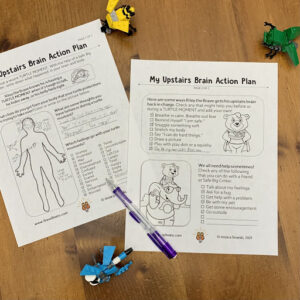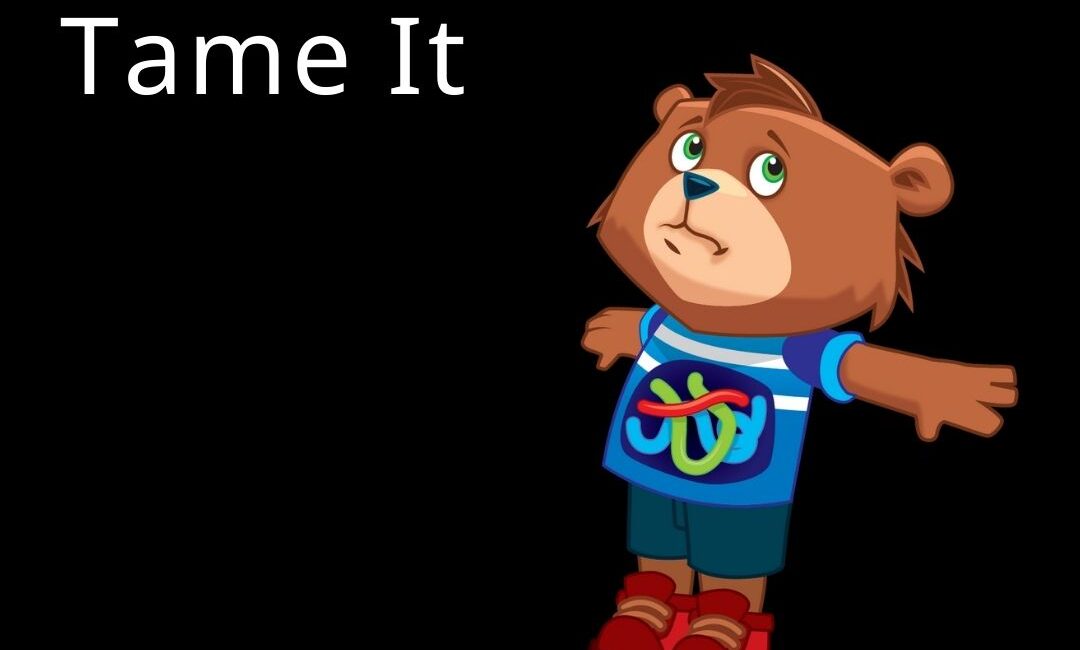I know we therapists talk about feelings a lot, but there’s a reason! Did you know that just putting a name or label to what you are feeling reduces the activity in the emotion center of your brain?
Sounds like magic! But it’s just user-friendly brain science.
Maybe you’ve heard the phrase “What’s mentionable is manageable.”
Drs. Dan Siegel and Tina Payne Bryson boiled down this complicated neurobiological process to a strategy they called
Name it to tame it
And there’s lots of research to back it up. Basically, you’ll feel better when you (or someone you feel safe with) can put words to what you’re experiencing.
Feelings can be uncomfortable. We often want to shut down those big mad or sad or scared emotions – in ourselves and in others, especially kids. How often do we say things like:
“Oh, that didn’t hurt. Stop crying.”
“Don’t worry about it. You’re tough.”
“There’s nothing to be scared of.”
“Stop fussing. There’s nothing wrong.”
Before we can help our kids with their big feelings, we have to start with ourselves.
I know, I know. It sounds like I’m asking you to do more work, and you’re already EXHAUSTED!! I promise this will make your life better. It’s a brain thing!
- Pause and breathe
Just for a moment. It doesn’t have to take long.
When you feel your mood dip or notice you’re having a grumpy porcupine moment, pause. Take a big deep breath in and a long breath out (this sends safety signals from your body to your brain that helps your Upstairs Brain get ready for the next steps).
- Reflect
Notice the feelings and sensations you’re experiencing. Are your shoulders tense? Are you feeling angry or sad?
When did it start? When you read that snarky email from a colleague or got a text message from your ex? When your child did something they weren’t supposed to?
One of the most powerful things we can do for ourselves and the children we care about is build our self-reflection muscles. It can change the way your children’s genetic code unfolds for them and generations to come – even your kids by adoption! I’ll have to chat more about epigenetics in a blog post someday. For now, on with feeling and dealing.
- Tell the story
Say it out loud. Write in a journal. Text a friend. The most important part is to notice the beginning, middle, and eventual end of the feeling. For example:

Try it today!

When the feelings are REALLY big, it’s always nice to have a safe person to talk with afterward. Failure, shame, guilt, hopelessness, powerlessness–those burdens become much lighter when we tell the whole story. In fact, putting it into words wakes up the left side of your brain that helps you manage the big feelings coming out of the right side of your brain. It also helps the feeling be just something that you are experiencing instead of taking over your whole identity. There’s a big difference between “I am a failure” and “I felt like a failure when my child stole something.”
Wondering how to do this with kids?
That’s why I wrote Riley the Brave Makes it to School. Request it at your local library or grab a copy here. I also created a resource pack full of tools to help you Name It to Tame It with the kids in your life!

Here’s how beautifully this can play out in real life…
I was talking with a mom of a child with significant trauma history and ongoing developmental and sensory issues. He would say “You’re stupid!” hundreds of times per day – when he was transitioning, getting his shoes on, going to the store, having to clean up, etc.
She started trying to name the feeling, and it really helped!
She would guess at first, “It seems like you’re mad because you want to keep playing.”
He was responding so well to that, she started making it shorter and more direct to his experience.
She would scrunch up her face matching his frustration and say, “Mommy, it’s uncomfortable to put my shoes on, and I don’t like it.”
Instead of 10 more angry bouts of, “You’re stupid,” he would pause, maybe say it one more time, or more often just stop!
Pretty amazing, right?! Brain science to the rescue!!
Name It to Tame It Mandala Coloring Pack
I know it can be hard to get this new language in our minds, so I created a new resource to help! Great for home or school–or even your own personal use!







[…] Press Pause with this guided reflection activity or learn how you (and your kids) can “Name It to Tame It.” […]